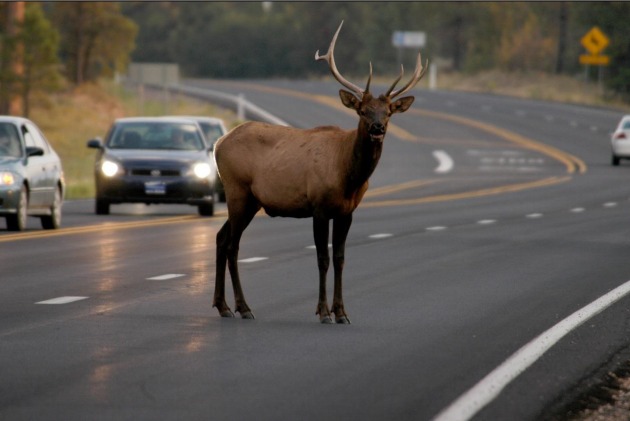Below is a news release from the Arizona Game and Fish Department (AZGFD). To help ensure wildlife overpasses will be well used, the Rocky Mountain Elk Foundation is partnering with The Nature Conservancy, AZGFD and the Kaibab National Forest to thin juniper and ponderosa pine north of the overpass site, helping restore the connectivity of a historic grassland corridor to the south once the construction is completed.
The Arizona Game and Fish Department (AZGFD) and the Arizona Department of Transportation (ADOT) are preparing for the launch of the Northern Arizona Wildlife Connectivity Project, set to break ground in 2025. The project’s first phase will involve constructing the first of three wildlife crossings designed to improve animal migration and reduce vehicle collisions.
More than 30 years of research by AZGFD has shown highways, railroad tracks and fences create barriers that disrupt the animals’ natural movement, hindering their ability to migrate, breed, and adapt to changing climate conditions. Since 1990, AZGFD has used tracking collars to understand and mitigate these obstacles. Advancements in GPS technology have provided increasingly accurate data, with GPS collars confirming the lack of movement and connectivity for elk, deer and pronghorn.
ADOT emphasizes that safety is a main driver behind the project, with improved wildlife connectivity being an added benefit. Based on prior research, each year, an estimated 200 elk and deer are killed in vehicle collisions along I-17 and I-40 near Flagstaff.
All three animal crossings planned for the Northern Arizona project (selected due to frequency of wildlife-vehicle collisions near those sites) are in the form of overpasses. The first two crossings are located on Interstate 17; one is near Willard Springs and the second is just north of Kachina Village. The third crossing is on Interstate 40 and will be located just west of Parks. Coconino and Kaibab national forests are also partners on the projects.
(Photo credit: Arizona Game and Fish Department)
